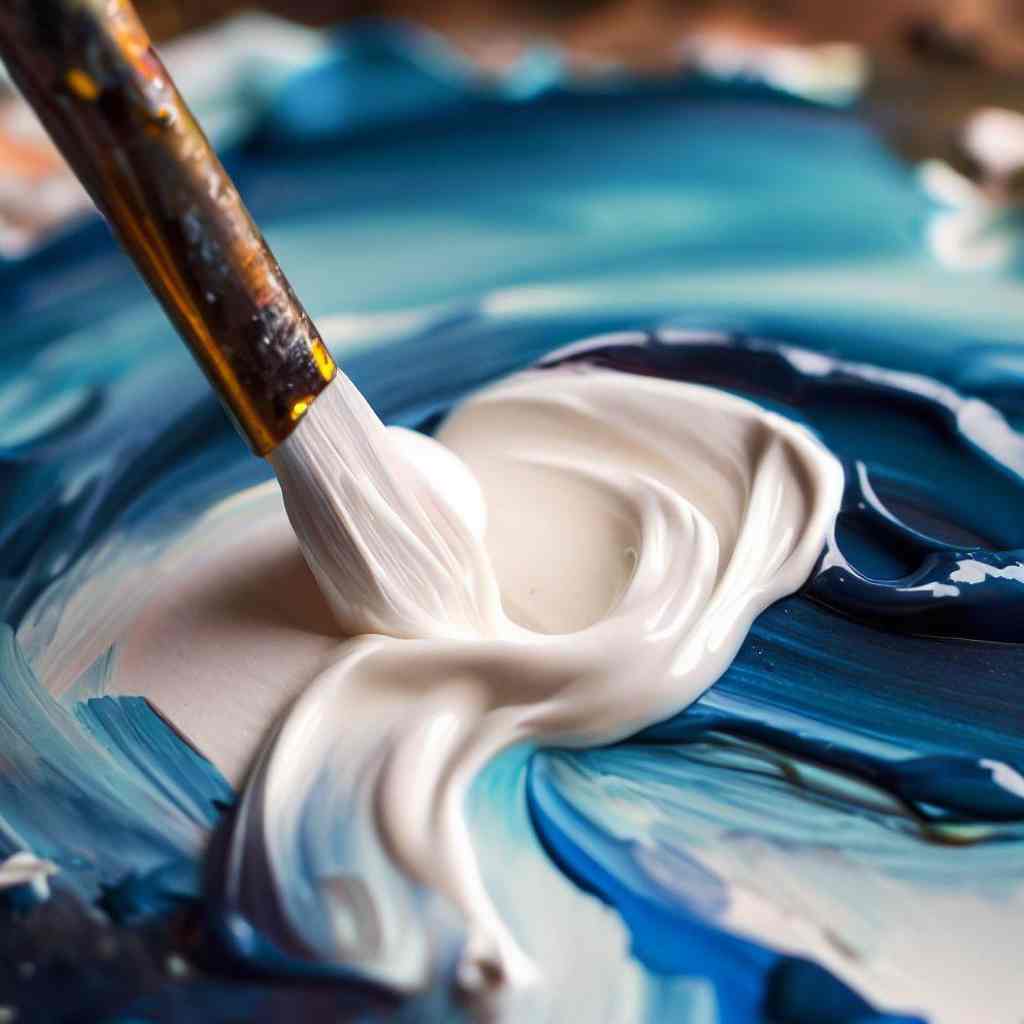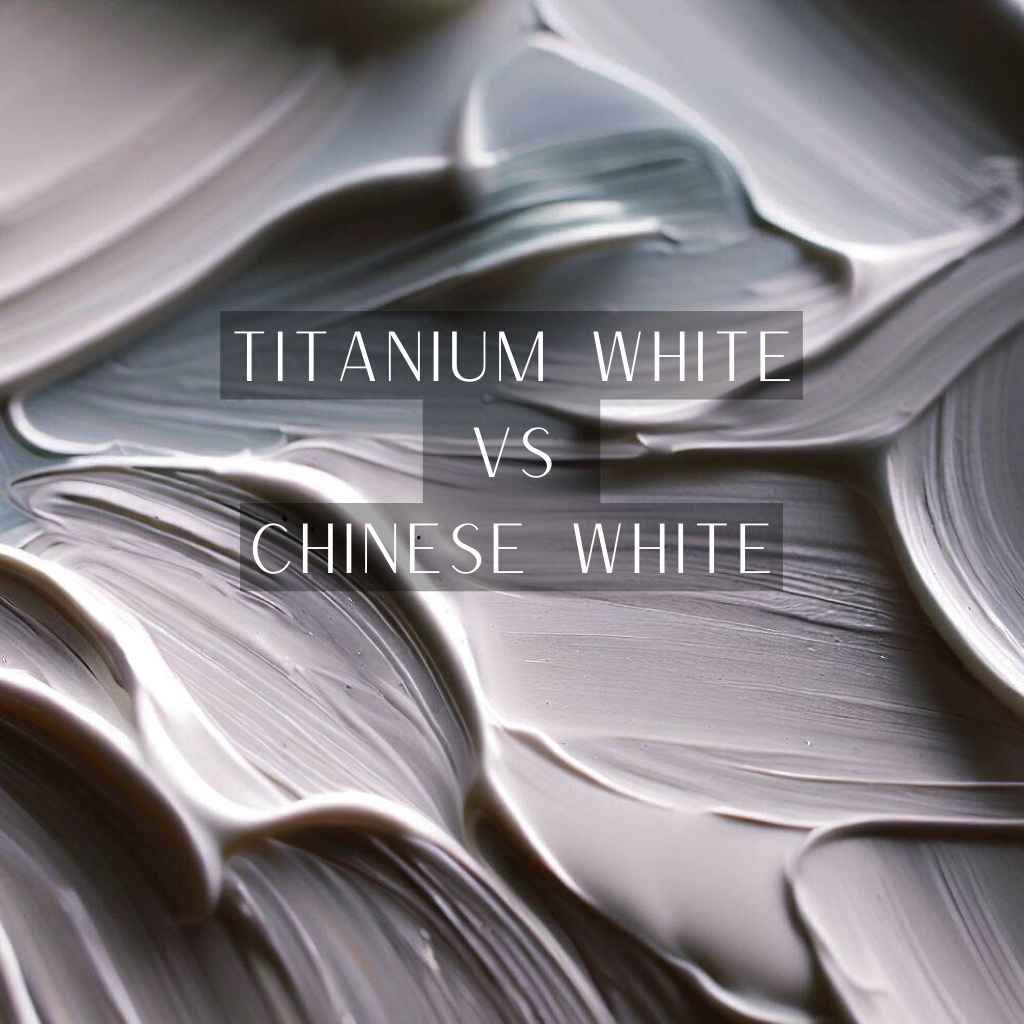In the world of art, where colors speak louder than words and every stroke carries a narrative, the clash of titanium white vs Chinese white unfurls as a captivating saga of contrasts and possibilities.
In this journey through hues and history, we’ll delve into the realm of pigments, exploring the composition, applications, and nuances that set these whites apart.
Get ready to uncover the secrets behind each stroke, the finesse in each blend, and the narrative that unfolds when the world of art converges with the world of pigments.
Let’s embark on this artistic odyssey, where the story of titanium white vs. Chinese white is just beginning.

What is Titanium White?
Titanium White is a true powerhouse in the world of pigments. Derived from titanium dioxide, it boasts a brilliant white hue that stands out prominently on any canvas.
This pigment is celebrated for its exceptional opacity and coverage, allowing artists to effortlessly mask underlying layers and create vivid contrasts.
Understanding how Titanium White is produced gives insight into its exceptional attributes. The pigment is synthesized through the reaction of titanium tetrachloride with water, resulting in fine particles that scatter light effectively. These particles lend Titanium White its outstanding opacity and brilliant white color.
What is Chinese White?
Chinese White, also known as “Zinc White,” has a storied history that dates back to traditional Asian art practices.
Unlike other white pigments, Chinese White is known for its subtle and delicate nature, making it a favorite among watercolorists and artists seeking ethereal effects.
The roots of Chinese White can be traced back to ancient Asian art forms, where it was utilized for creating luminous washes and intricate details in traditional paintings. Its use as a watercolor pigment has made it an essential tool in the world of delicate and transparent artworks.
Titanium White vs Chinese White: Comparison
In art, choices are the strokes that paint one’s artistic journey. As you stand before your canvas, whether welding Titanium White or Chinese White, you are poised to create not just a masterpiece, but a testament to your discernment as an artist.
Opacity vs. Transparency:
When navigating the spectrum of whites, a pivotal decision lies in balancing opacity and transparency. Titanium White, with its resolute opaqueness, empowers artists seeking bold contrasts and captivating highlights.


On the other hand, Chinese White unveils its transparent character, inviting delicate layering and a soft radiance to emerge.
The choice between these two hinges on the narrative an artist aims to weave, where opacity illuminates with authority, and transparency paints a story with subtlety.
Lightfastness
As time’s brush strokes across the canvas of art, considerations of lightfastness and permanence become paramount. Titanium White, boasting steadfast stability, safeguards colors from the grasp of time’s erosion.
In contrast, Chinese White, while possessing its own allure, can be prone to a gentle patina of yellowing. This nuanced aging process, often seen as a sign of authenticity, carries the echoes of history within its tinted embrace.
Mixing Capabilities

At the heart of artistry lies the alchemical dance of color mixing, where whites serve as the maestros orchestrating the symphony of shades. Titanium White’s versatile nature shines as it seamlessly blends with pigments, giving birth to an array of tints and hues.
Chinese White, with its transparency, wields a subtler touch, allowing for layers that maintain luminosity and depth.
Cultural and Artistic Influences
Colors and their meanings ripple through cultures and epochs, imprinting art with a cultural fingerprint. Titanium White’s reign as a favored white pigment is prominent in contemporary Western art, its boldness and coverage reflecting modern sensibilities.
Meanwhile, the legacy of Chinese White unfurls through Asian art, its delicate transparency harmonizing with traditional brushwork techniques.
As culture and art intertwine, the choice between these whites becomes not just a selection of hue, but a nod to the rich tapestry of artistic heritage.
Best Uses and Techniques for Titanium White
Titanium White isn’t just a pigment; it’s a multifaceted tool. It breathes life into highlights, creates a bridge between hues, sculpts tangible textures, and refines intensity with subtlety-
- Creating Highlights: Highlights breathe life into paintings, and Titanium White is the luminary behind this transformation.
Whether on canvas or board, its application with precision adds brilliance, making subjects pop and canvases come alive.
- Subtle Blending: Softness requires finesse, and Titanium White is the master of subtlety. With a deft touch, it melds colors seamlessly, creating gradients that capture the eye and evoke emotions.
- Building Texture: Textures invite tactile exploration. Titanium White’s thick consistency empowers artists to build layers, carving surfaces that beg to be felt—a tactile symphony that adds a new dimension to visual art.

- Toning Down Intensity: Intensity demands balance and Titanium White answers the call. With a touch, it tempers vibrancy, lending a controlled desaturation that guides the viewer’s gaze without overwhelming the senses.
Best Uses and Techniques for Chinese White
Chinese White isn’t just a pigment; it’s an alchemist of delicate tints, a conductor of luminous watercolors, a partner to gouache’s velvety brilliance, and a sculptor of printmaking nuances-
- The Elegance of Tints: Pastels and delicacy find a friend in Chinese White. Its transparent touch breathes life into soft shades, adding an elegant touch that awakens subtlety.
- Luminous Watercolors: In the aqueous world of watercolors, Chinese White reigns supreme. Its transparency transforms paper into a realm of light, creating luminosity that dances upon the surface.
- Gouache Brilliance: Gouache’s velvety allure is amplified by Chinese White’s opaqueness. Together, they create a symphony of depth, where colors are not just seen but experienced.
- Printmaking Possibilities: Printmaking, an art of replication, finds a partner in Chinese White. Its delicate touch adds layers of dimension to relief techniques, where each print tells a nuanced tale.
FAQs
- Can I mix Titanium White and Chinese White together?
Absolutely! Mixing these two whites can lead to interesting results, combining the opacity of Titanium White with the transparency of Chinese White to create unique hues and shades.
- Does titanium white and Chinese white have any impact on the drying time of paint?
Generally, both Titanium White and Chinese White have similar drying times as other pigments within their respective mediums. However, the drying rate can also be influenced by factors like the brand of paint and the thickness of the application.
- Are there any alternatives to titanium white and Chinese white pigments?
If you’re seeking alternatives, there are other white pigments available, such as Zinc White and Mixing White, each with its own unique characteristics. Exploring these alternatives can lead to new creative possibilities.
- Can Titanium White and Chinese White be used for underpainting?
Yes, both pigments are excellent choices for underpainting. Titanium White can establish highlights and structure, while Chinese White can create subtle tonal variations as a foundation for subsequent layers.
- How do I prevent muddiness when using titanium white and Chinese white together?
To avoid muddiness, ensure that your brushes and palettes are clean when switching between Titanium White and Chinese White. Gradually layer the pigments and consider their unique properties in your mixing process.
Conclusion
As the final strokes of this artistic exploration grace the canvas of knowledge, the vivid tapestry of titanium white vs Chinese white stands woven with a symphony of nuances and revelations.
In this journey through pigments and palettes, you’ve witnessed the dance between opacity and transparency, felt the brush of history’s embrace, and marveled at the interplay of light and shadow.
As we conclude this captivating chapter, remember that the choice between these whites isn’t just a selection of pigments; it’s a profound choice that echoes through time, where each hue becomes a vessel for expression.
The tale of titanium white vs. Chinese white finds its closure, but your artistic narrative has only just begun.





